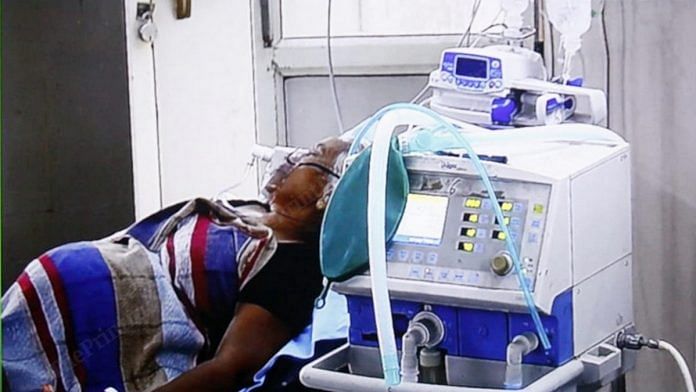New Delhi: It has been more than three months since the nationwide lockdown was imposed, and more than a month since restrictions began easing. But India’s Covid-19 numbers have continued surging.
This week, India crossed the 5 lakh mark of total cases, resulting in many states and cities looking to extend their lockdown for a few more weeks. In addition, floods and locust attacks have added to people’s misery and fears.
Prime Minister Narendra Modi on 30 June announced the extension of the ‘PM Garib Kalyan Anna Yojana’ until the end of November, providing free food grains to around 80 crore people. Many have been struggling to earn an income in an economy that was already weak even before Covid struck.
In all this, ThePrint’s reporters and photojournalists are continuing to travel across the country to bring you the latest and most accurate eyewitness accounts of how people have been affected by the pandemic.
This week, ThePrint travelled across Mumbai, Assam and Agra. They’ve been out in fields and on highways, in cities and remote villages, to meet with local governments and healthcare officials, migrant workers and more.
Also read: Aggressive Covid testing in Andhra, high caseload in Telangana and Assam’s silent handlooms
Navi Mumbai’s war room a sea of data, Agra model not working
Having reported more than 6,200 cases and registering a daily average of 234 new cases, Navi Mumbai is just one of the eight satellite towns and suburbs of Mumbai that is seeing a sharp spike in caseload.
ThePrint’s Ananya Bhardwaj visited the Navi Mumbai Municipal Corporation head Office, which has been turned into a de facto ‘war room’. Here, 20 data entry operators and analysts and two health experts keep real-time tabs on all the Covid-19 cases in Navi Mumbai and their contacts, and assign them a medical facility based on their symptoms.
The operators also compile daily reports so that analysts can examine trends in Covid cases, and strategise accordingly. Read more here.
The situation is starkly different in Agra, India’s first Covid hotspot that was later praised for its aggressive, tech-driven containment strategy, dubbed the ‘Agra model’. Now, it has a death rate of 7 per cent.
This is more than double the rest of Uttar Pradesh, and higher than cities such as Delhi and Mumbai, which have many more Covid cases.
ThePrint’s Revathi Krishnan and Praveen Jain visited the city’s Sarojini Naidu Medical College Hospital, where the superintendent of the isolation facility, Dr Prashant Gupta, told them that after Unlock 1 and relaxations on interstate movement rules, the caseload went up.
District Magistrate Prabhu N. Singh agreed that proximity to Delhi, Haryana and Rajasthan, and an influx of people coming in from there, added to the case count.
Moreover, people were coming to the hospitals when their symptoms are already severe, leading to a high death toll, said Gupta.
While the District Magistrate and Chief Medical Officer TRC Pandey said the testing and containment strategies have been ramped up and are meticulously followed, locals told ThePrint another story.
Residents of Namnera, a containment zone, said that even after a man here tested positive and was sent to a facility, no one else in the entire area had been tested at
all. Read more here.
Also read: How a small Delhi group helped over 4,200 migrant workers reach home in UP, Bihar, Jharkhand
Covid and floods in Assam’s Goalpara
The state of Assam is no stranger to floods, given the mighty Brahmaputra that flows through it. But to have to deal with flash floods in the middle of a pandemic was something neither Goalpara district’s administration nor its locals were prepared for.
Last month, more than two lakh people across 150 villages were impacted by floods. Bablu Husain, a 31-year-old from Matia, said that he noticed on the morning of 25 May that water had entered his house. He informed local authorities and by afternoon, he and his family were taken to a relief camp.
“That time we were definitely scared of corona. But more than that, we were scared of the flood. Our houses were submerged,” Bablu said.
“The Chief Minister (Sarbananda Sonowal) had given us directions well in time to have a separate setup for Covid and a separate set up for floods; so we had an entirely different team working on floods and an entirely different one for Covid,” said Goalpara Deputy Commissioner Varnali Deka. Read more here.
Also read: Barbers in PPE at Tirupati, Tiruppur garment units bounce back and KCR’s messy Covid battle






